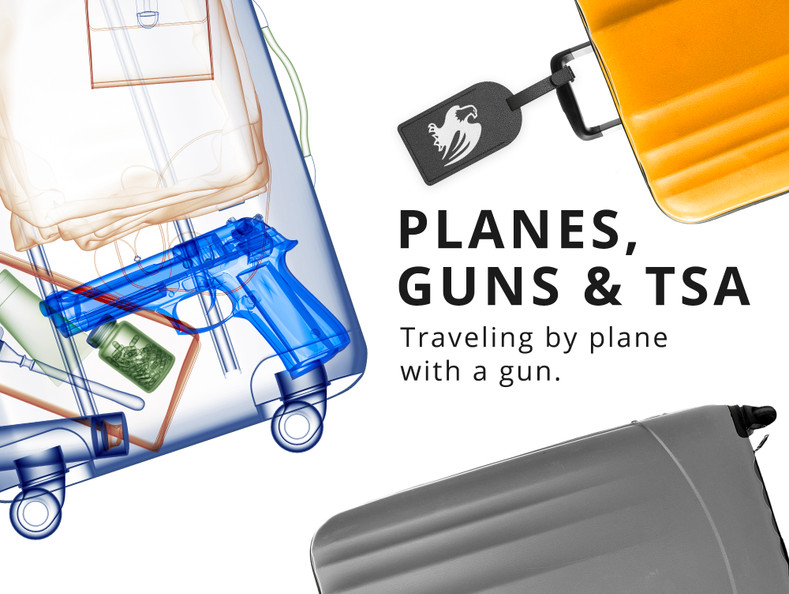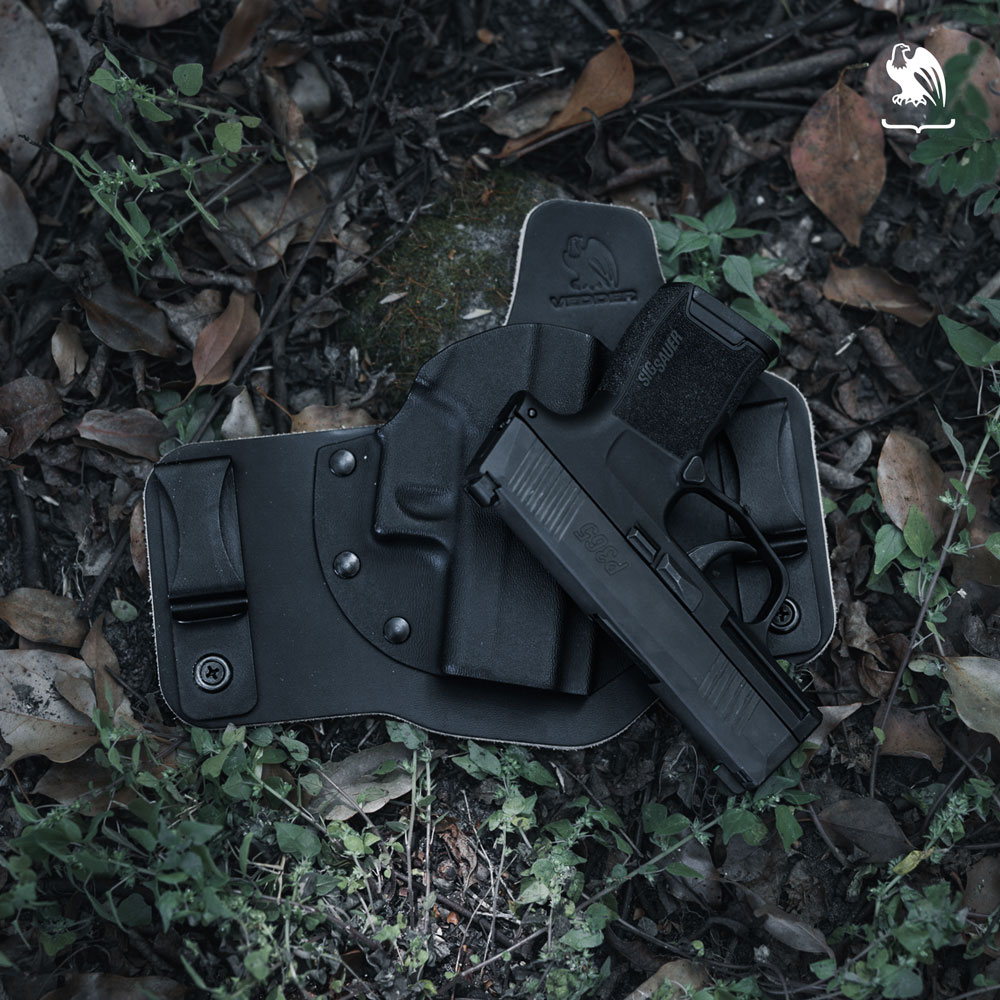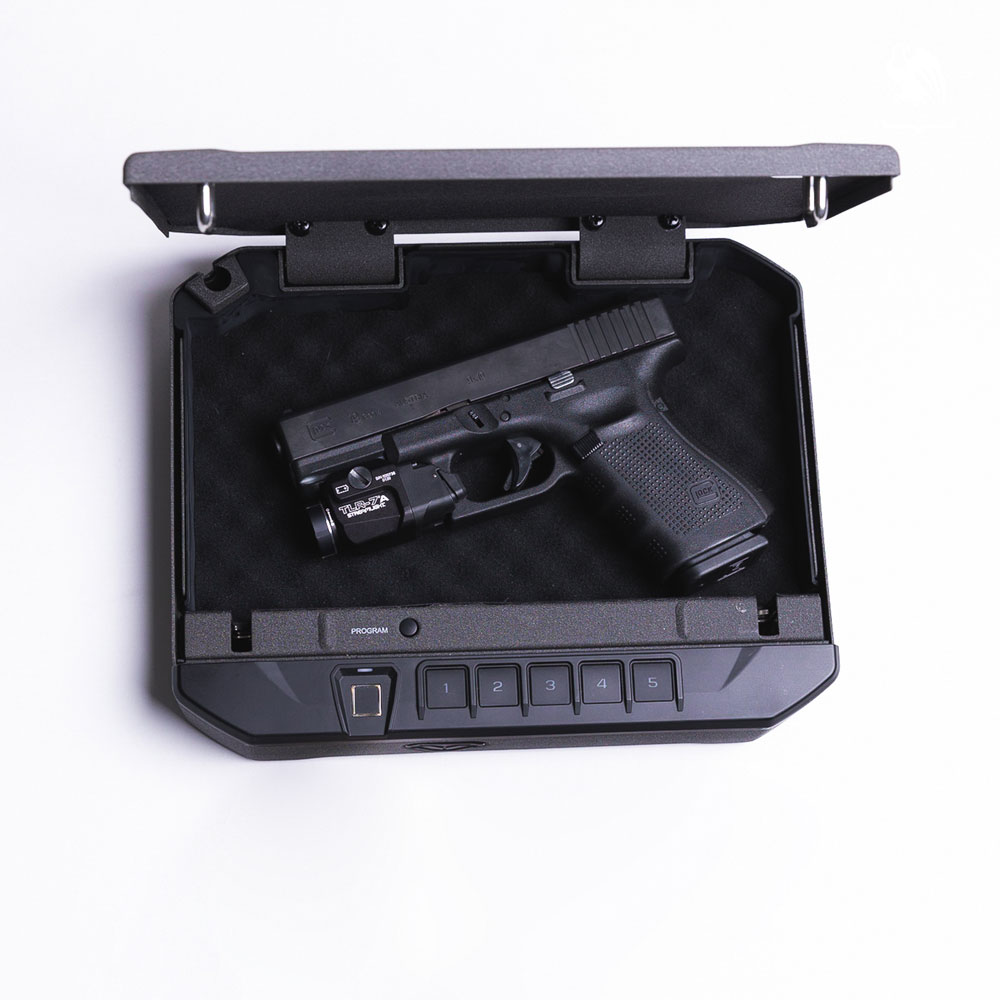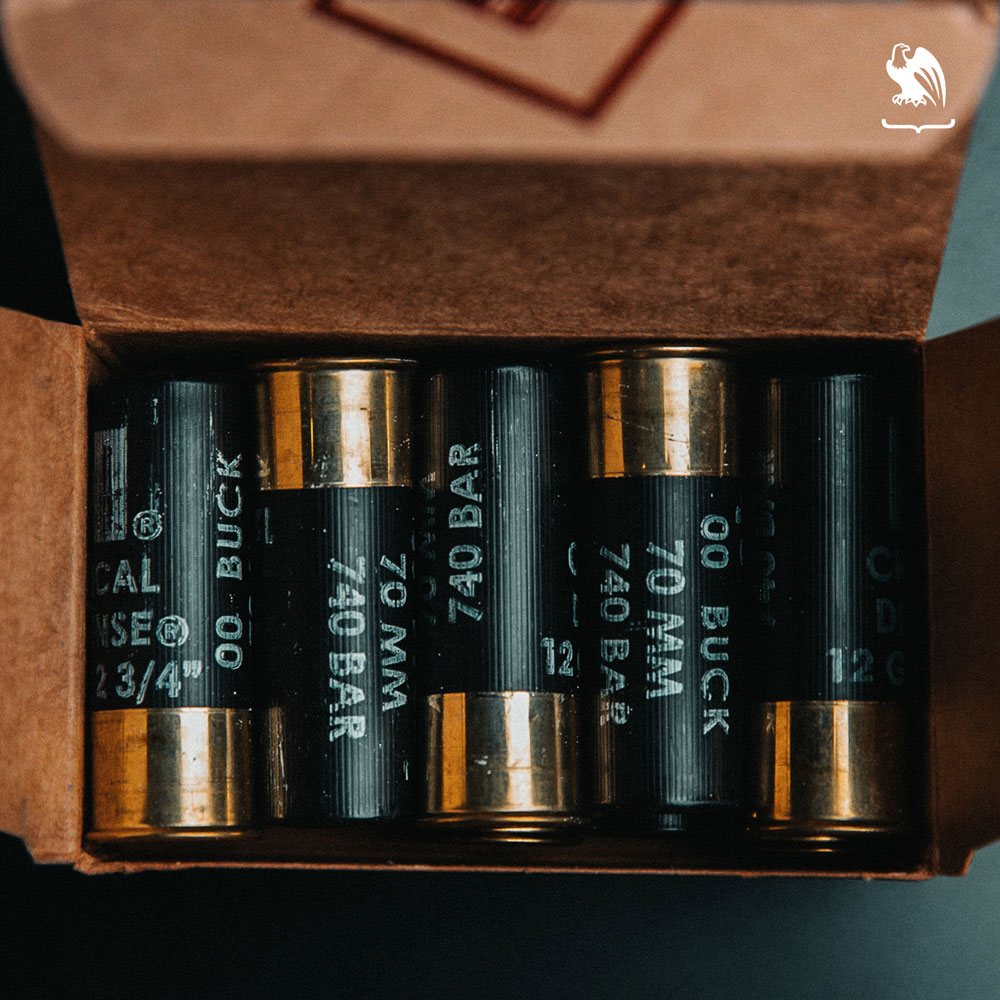How to Fly With a Handgun: Ultimate Guide

We often hear the question: can you check a gun on a plane? It turns out that, in fact, you can. But, as you can imagine, there is more than a bit of preparation necessary on your part to make sure that your experience goes smoothly.
Figuring out how to fly with a handgun is no simple task. It’s important that you’re in compliance with state, federal, and airline regulations, and that you plan ahead by giving yourself extra time at the airport and securing your weapon in a proper safe.
With a good understanding of the laws and rules that govern flying with a firearm, and possessing it along the way, checking a gun on a plane is certainly possible. As long as you take the initiative in being informed in the process, it can even be a smooth experience at the airport. Well, as smooth as airports can be in the 21st century.
State Laws
The first thing you’ll need to think about when flying with ammo or a firearm is the state laws where you are, your destination, and anywhere you might have a layover. Once you understand all three of these sets of laws, you will be well on your way to successfully flying with a firearm the next time you travel.
Laws in Your State
Of course, the first step along this journey is making sure that you are in compliance with the laws in your state. Each state has a website that lists its statutes, and it is your legal responsibility as a firearms owner to be aware of them.
This is important when considering flying with a gun, as every state has different rules. Some even ban people from carrying firearms inside airport facilities altogether.
This should go without saying, but you must be legally allowed to possess a firearm in your state, and any firearms you own must be in compliance with local laws if you hope to have a smooth experience. After all, one of the first things you are going to do is turn your firearm over to an airport employee who works with law enforcement agencies on a daily basis.
Even if you have a concealed carry permit and are flying with your CCW, it might be a good idea to put the firearm and ammunition in locked TSA-approved cases before heading to the airport. Even if you aren’t breaking any laws, it’s courteous to consider the alarm someone in the general public, especially someone from a foreign country, might experience if they see you putting a firearm in a case at the airport.

Laws at Your Destination
Since each state gets to make its own laws, they vary greatly. What might be a perfectly legal firearm to own in your state can get you in serious trouble just one state over. Thus, much like your home state, verify that the firearm you plan to bring to your destination is legal in that state. Failing to do so might land you in very serious trouble if you get pulled over or interact with law enforcement while on your trip.
This concern also goes for people who can legally carry a firearm in their home state. If your home state requires a concealed carry permit, it might not be valid in the state you are going to. The USCCA has put together an excellent tool to help you find out whether your concealed carry permit is recognized in the state you’re visiting, and includes handy summaries of each state’s gun laws.
Check the gun laws of your destination before you fly! Gun laws change, so, even if you have flown to a given state with a firearm before, getting the most up-to-date information on the laws of where you left from and where you intend to go can help you avoid serious legal trouble.
Think About Layovers
Luckily, if you have a connection that is within the United States and all goes according to plan, you should not have to worry about the laws in any state where you have a layover. During a layover, the airline is in possession of, and responsible for, your firearm.
But there might be an important exception to this: if you miss your correction, a flight gets delayed, or you have to leave the airport with your firearm, you now have to comply with the local laws wherever you are. Research from New York based Bukh Law, for example, found that dozens of people have been arrested at New York air and sea ports on gun-related charges.
While there isn’t a specific solution to this problem, it is something to think about before leaving the airport. If you find yourself in a situation like this, it might be wise to consult with the airline to see if they can hold your firearm as secure baggage until you can make the next flight to a state where you know you are legally allowed to possess your firearm.
TSA: Flying With Firearms

Once you know your state laws, you should be well on your way to flying with a firearm… as long as you’re willing to understand and abide by federal rules and regulations as well. The Transportation Security Administration, or TSA, has a myriad of rules on how to fly with a firearm.
TSA Regulations
The TSA indicates the following as their major rules for flying with firearms and ammunition:
- You must declare any guns/ammo to the airline when checking your bag at the ticket counter.
- Firearms can only be transported as checked baggage.
- All guns have to be locked in a hard-sided container. It doesn’t matter what kind of lock you use, as long as it’s secure.
- Firearms must be unloaded. It’s important to note that TSA considers a weapon to be loaded if a firearm and ammunition are both accessible to a passenger. For example: “if an individual has a firearm in accessible baggage and ammunition in his/her pocket, or any combination where the individual has access to both, the firearm is considered ‘loaded’ for purposes of assessing a civil penalty.”
- Only the passenger should have a key or combination to the firearm’s container unless a TSA agent needs it to open the box to verify the weapon is in compliance.
The above rules are current as of this writing in May 2023, but you should always double-check the TSA’s website before attempting to transport a firearm to avoid any issues at the airport.
Airline Regulations
Once you understand all the relevant state laws and TSA regulations, the final preparatory step you should take is to look up your airline’s policies before you book a ticket or arrive at the airport.
Airline policies and procedures vary widely, so it is vital that you do your homework. Delta Airlines, for example, is upfront about its procedures and lists out exactly what they would like you to do as a passenger. JetBlue, interestingly, not only outlines its policies but sometimes even offers firearm cases for sale right at the airport.
Because companies dictate their own policies under federal law, the only surefire way to make sure you are in compliance is to both look at the website and call the customer service number to address any ambiguities and questions.
Company policies will not, generally, vary extremely due to the limitations of federal law, but with an ever-shifting regulatory climate around both firearms and airlines, you should go prepared with as much information as possible.
Five Useful Tips
In our experience, there are a few extra considerations for how to fly with a handgun that you won’t find listed in company policies or any relevant laws. Here are five recommendations that might be useful the next time you decide to fly with a firearm:
Arrive Extra Early
Since you will have to go through the extra steps of declaring your firearm and ammunition separately from your other luggage, and you’ll be talking with an airport employee or two in the process, it’s a good idea to arrive about an hour earlier than you normally would. Depending on the airport, arriving three hours prior to departure is a good rule of thumb when you plan to declare a firearm to airport staff.
Fly at Less Crowded Times
At some point, you will likely be at an open, very public, airport counter explaining to someone, out loud, that you are in possession of a firearm and ammunition.
Even though most airport staff are discrete and professional about this, there is always the chance of someone becoming unduly alarmed. Those odds are greatly reduced if there are fewer people around. So, it might be a good plan to fly very early in the morning, late at night, or on weekdays to cut down on the number of people within earshot of what should be a simple and private conversation at the check-in desk. Plus, it will save you time!
Say “Firearm” rather than “Gun”
While it might seem silly to those of us in the gun community, the word “gun” often evokes fear and panic in a lot of people. And chances are, you won’t feel like making an argument for your second amendment rights to a stranger at the airport, or to an officer who got a call about “someone with a gun at the airport” from a panicked, jet-lagged traveler.
To avoid any hassle, the phrase “I would like to declare a firearm with my baggage today” is both to the point and nonchalant enough that the vast majority of people in line behind you probably won’t even notice.
Ask for a Manager
Even though flying with guns and ammo is completely safe and legal, there’s a small chance the airport employee you’re talking to at the check-in desk won’t know the proper procedure.
Sometimes it goes more smoothly if you ask to speak to a manager to help you check something fragile and expensive. You can then explain to that manager that the fragile, expensive thing is, in fact, your concealed carry pistol and a box of ammunition. They should be able to take it from there.
Save a Factory Ammo Box
Although according to the TSA, you’re not required to use a factory box to transport guns and ammo, it is often much simpler for everyone involved if you do. Saving a factory box for your ammunition and keeping it locked in the same case as your unloaded firearm helps keep things simple.
Since the lettering is easy to read and understand, including the number of rounds and caliber, this makes the declaration process a lot smoother.

A Walkthrough of the Airport Experience
To put it all together, here is how to fly with a handgun from start to finish:
Before you book tickets, read up on your local firearm and concealed carry laws. Also, purchase a hard-sided case for your gun and magazines. Empty the magazines and store the ammunition in a factory box. It’s also a good idea to print the airline’s firearm policy as you book tickets. Now, book away.
Before leaving for the airport, put the firearm, magazines, and ammunition all in the hard-sided case, and lock the case with a TSA-approved lock. Keep the keys handy.
Upon your very early arrival to the airport, bring your tickets and baggage, including the locked firearm, to the check-in desk and inform the staff member that you need to declare a firearm – consider asking for a manager to handle this. You will then likely be asked to unlock the case, show that the firearm is unloaded, and sign a declaration form. Do not lose this declaration form!
Now you can go through security, head to your gate, and enjoy your flight.
Upon landing, go to the airline’s counter after you leave from the secure terminal area, and ask where to pick up sensitive checked bags. This is usually the same spot for sporting equipment, pets, and musical instruments as well as firearms. There might be a bit of a wait at this point, so be patient.
Upon reclaiming your firearm and case, it’s a good idea to unlock it briefly and discreetly to ensure everything is there. Most check-out agents at sensitive bag areas will ask you to do this in front of them to ensure nothing was lost.
You’re now done with the airport portion: if you can legally conceal carry at your destination, you can find a private space to load your magazines, charge your weapon, and holster it securely.
Conclusion
While all of this sounds complicated and might present a bit of a daunting challenge, it is certainly possible to fly with a firearm.
For most people, the first time doing this is the most nerve-wracking. But once you know how to fly with a handgun, it’s relatively easy. But, if you follow your local and federal laws and are transparent with airport staff, the process is certainly doable.
If you do your research ahead of time, plan for extra time at the airport, and ensure your case meets the requirements, flying with a firearm can be accomplished without any issues.
If you’re looking for a new IWB, OWB, or pocket carry holster, visit our Holsters by Gun Model page for Kydex holsters that are custom-made for your weapon of choice.
Interested in items beyond holsters? Check out our Resources Page for links to recommended products like lights, lasers, first aid, maintenance, and more, and browse our selection of apparel, and accessories at our website, vedderholsters.com.
To stay up-to-date on all the latest Vedder Holsters content and offerings, check out our blog and follow us on Facebook, Instagram, and Twitter. And be sure to visit our sister company, GeoGrit, for all of your American-made minimalist wallet needs.
